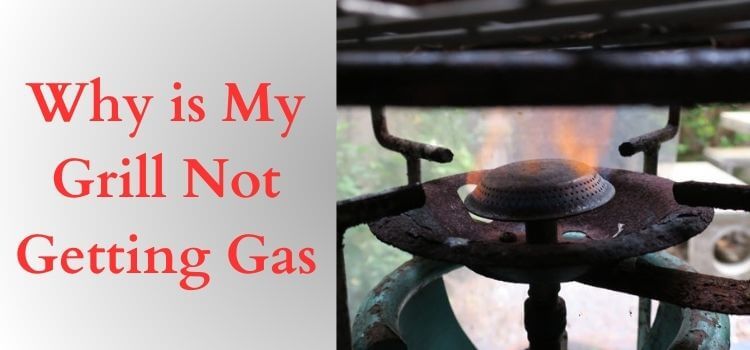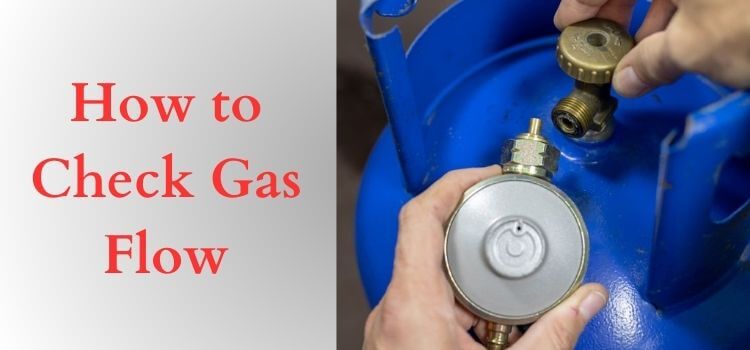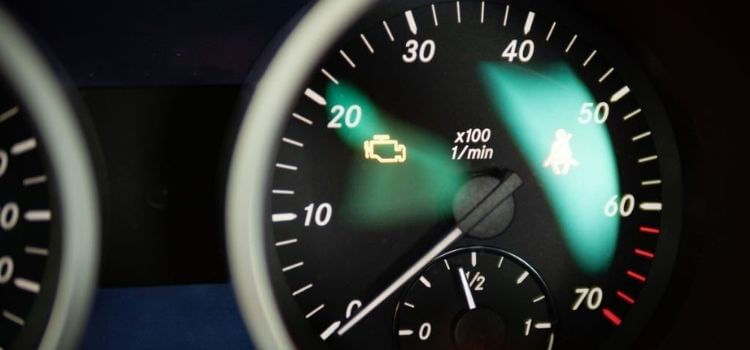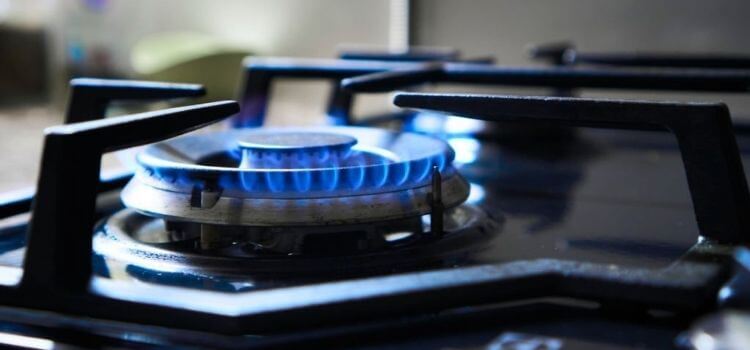As an Amazon Associate, I earn from qualifying purchases
You’ve planned the perfect cookout. The steaks are marinated, the veggies are chopped, and the weather is perfect. But your grill isn’t getting gas. This is an all-too-common problem, and it can be frustrating to you “Why is my grill not getting gas.” But don’t fret. This article will guide you through diagnosing and fixing the issue.

Why is there no gas coming out of my grill?
The main reason for no gas coming out of your grill could be an empty propane tank or a malfunctioning regulator, which controls the gas flow from the tank to the grill. Also, There could be several reasons why there’s no gas coming out of your grill. Here are a few possibilities:
1. Gas Line is Turned Off
One of the simplest reasons might be that your gas line is turned off. This can occur if you accidentally bump into the knob or switch, especially when moving or cleaning your grill.
2. Blocked Gas Line
Another possibility is that your gas line is blocked. This could be due to the accumulation of debris, dust, or insects in the line, which can hinder gas flow to your grill.
3. Faulty Gas Regulator
The regulator is a crucial component that controls the pressure of the gas. If it’s malfunctioning or faulty, it may prevent gas from reaching your grill, even if your tank is full.
4. Empty Propane Tank
Lastly, the most obvious reason might be an empty propane tank. This is a common issue, especially if you’ve been grilling a lot and forgot to keep an eye on the level of your tank. Always check your propane tank levels before starting a grilling session to prevent this from happening.

How do you check gas flow on a grill?
Here’s a simple process to check the gas flow on your grill:
Check the propane tank: First, ensure your propane tank is not empty. If you shake the tank and it feels light, it might be out of gas.
Check the connections: Ensure that all connections are secure. The hose that connects the propane tank to the grill should be tightly attached.
Do a soap test: This can help you identify any leaks. Mix a little amount of dish soap with water and apply this solution to the connection points. If you see bubbles forming when you open the gas, this indicates a leak that could affect the gas flow.
Check the regulator: The regulator controls the flow of gas from the tank to your grill. If the regulator is not working properly, it might be preventing gas from reaching your grill. To check it, turn off the gas at the tank, disconnect the regulator, wait a few minutes, reconnect it, and slowly turn it on.
If you’re still not getting gas flow after these steps, it may be a more complex issue and you might need professional assistance. Always remember to exercise caution when dealing with gas appliances to avoid accidents.
How to Diagnose: Why is My Grill Not Getting Gas?
1. Checking the Gas Line
The first step is to check the gas line. Make sure it’s turned on. If it is, then inspect for any potential blockages. Disconnect the line from both ends and look inside to check if any debris or insects might be causing the issue.
2. Inspecting the Gas Regulator
Next, check the gas regulator. It’s the part that controls the pressure of gas coming from the tank. If the knob is hard to turn or it feels loose, it might be defective. Sometimes, a visual inspection could show signs of wear and tear, indicating a need for replacement.
3. Checking the Propane Tank
Lastly, check your propane tank. If it’s empty, it’s clear why your grill isn’t getting gas. If you’re unsure, disconnect it and give it a gentle shake. If it feels light, it might be time for a refill. Some tanks also have gauges that can indicate the level of propane left in the tank.

How to Fix the Issue
When your grill isn’t getting gas, it’s not just a minor inconvenience but can also put a damper on your plans for a great barbecue. Here’s how you can address the issue:
Refill or Replace the Gas Tank
One of the simplest reasons for the grill not getting gas is that the gas tank is empty. Check the level of gas in your tank. If it’s low or empty, refill it or replace it with a new one.
Clean the Gas Line
Over time, the gas line can become blocked with dirt, debris, or even insects. This can disrupt the flow of gas to your grill. To fix this, you’ll need to clean the gas line. Here’s how you can do it:
Disconnect the gas tank from the grill.
Use a wire brush to clean the inside of the gas line gently. Be careful not to damage it.
Once cleaned, reconnect the gas tank and test the grill.
Check and Replace the Regulator
The regulator controls the flow of gas from the tank to the grill. If it’s faulty, it can prevent gas from reaching the grill. Check the regulator for any visible damage. If you see any, or if the grill still doesn’t work after checking the other components, you might need to replace the regulator.
Inspect and Replace the Igniter
The gas is ignited by the igniter, which also kickstarts your grill. Even if gas is getting to the grill, it won’t light if it’s broken. The igniter may be the issue if you attempt to light the grill and hear a clicking sound instead of seeing any flames. If so, think about changing it.
Remember, safety is paramount when dealing with gas appliances. If you’re unsure about any step, it’s always better to call a professional to avoid any accidents or damage. And once you’ve successfully fixed the issue, it’s time to fire up the grill and enjoy a well-deserved barbecue!
How do I check the gas level in my grill?
There are many methods to check the gas level in your propane barbecue. Here are some techniques you may employ:
1. The Water Weighing Method
This is a quick and easy way to check the gas level in your tank.
Disconnect the tank from the grill.
Pour warm (not hot) water down the side of the tank.
After a moment, run your hand down the side of the tank. It will feel cooler to the touch at the level where there is still propane in the tank.

2. The Weight Method
Every propane tank has a tare weight (TW), which is the weight of the empty tank. This is usually printed on the collar of the tank.
Disconnect the tank from the grill.
Weigh it on a bathroom scale.
The overall weight is reduced by the tare weight. The result is the weight of the propane left in the tank.
A full 20lb propane tank should weigh about 37-38 pounds. If it weighs around 18-20 pounds, it’s empty.
3. Using a Gas Gauge
Some propane tanks include an integrated gauge that displays the remaining propane. Alternatively, you can buy a separate gauge connecting the gas line and the tank. These gauges can give you a rough idea of how much gas is left.
Remember, if you’re ever unsure, having a spare tank on hand is always a good idea, especially if you’re planning a barbecue.
How do I reset the regulator on my gas grill?
Resetting the regulator on your gas grill can be a quick fix if your grill isn’t getting gas properly. Here are the steps to reset the regulator:
Turn off the gas: The first step is to ensure the gas is shut off at the source. The knob on top of the tank is normally turned clockwise until it can no longer be turned.
Disconnect the gas line from the propane tank: This step may require a wrench or pliers depending on your grill model. Be careful not to damage the connection.
Open the grill lid: This is done to ensure that any excess gas within the grill is allowed to dissipate.
Turn all control valves to a high (or “ignite”) position: This further helps to release any trapped gas. Leave them in this position for about a minute.
Turn all control valves to the off position: After a minute, turn all the knobs back to the off position.
Reconnect the gas line to the propane tank: Again, you might need a wrench or pliers to secure the connection. Ensure it’s properly attached.
Slowly turn on the gas at the propane tank: You want to do this very slowly to avoid triggering the regulator’s safety mechanism that can limit gas flow.
Light the grill normally: You should now be able to light your grill as you normally would.
If your grill is still not getting gas after resetting the regulator, the regulator itself could be faulty & may need to be replaced. If you’re unsure or uncomfortable performing these steps, it’s always best to call a professional.
How do I increase gas flow to my gas grill?
The primary reason for limited gas flow to your grill typically lies in either an empty propane tank, a malfunctioning regulator, or obstructions in the gas lines or burners. To enhance the performance of your grill, Here are some key points:
Propane Tank Inspection: Regularly checking your propane tank’s level is vital to ensure uninterrupted grilling sessions. If the tank is empty, refill it promptly.
Regulator Reset: The grill regulator controls the gas pressure from the tank to the burners. Sometimes, it might need a reset. Disconnect the line, wait for a few minutes, reconnect, and slowly turn on the gas.
Burner Port Cleaning: The burner ports can get blocked by debris or grease, limiting the gas flow. Regularly maintaining and cleaning these ports can significantly enhance your grill’s performance.

Gas Line Monitoring: Keep an eye out for any bends or kinks in the gas lines that could potentially restrict gas flow.
Venturi Tubes Check: The venturi tubes, which mix air and gas, can sometimes get blocked. Using a venturi brush to clean these tubes can improve your grill’s gas flow.
Conclusion
A grill that’s not getting gas can put a damper on your barbecue plans. However, by understanding the common reasons and learning how to diagnose and fix the issue, you can quickly get back to grilling. Keep in mind, safety should always be your top priority. If you’re unsure about any steps, it’s best to consult with a professional.
Leave a Reply